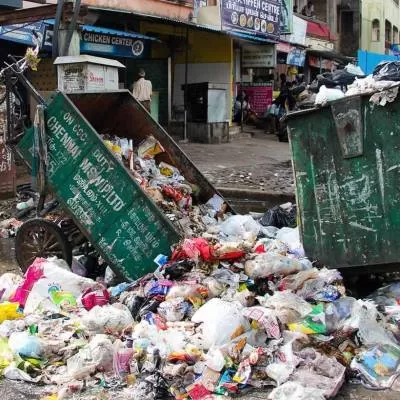- Home
- Technology
- The Digital Advantage

The Digital Advantage
<span style="font-weight: bold;">K RAVICHANDRAN</span> says the adoption of digitalisation is key to reaping the benefits of recent policy changes. <p></p> <p> The construction sector in India has evolved gradually over the years in terms of adoption of new materials, processes and technologies. However, in comparison to other sectors, it has been slow to adapt to digital technologies. While globally, construction companies use digital technologies like 3D printers, sensors, GPS, radio-frequency identification (RFID), etc, few Indian construction companies use such technologies. Some key reasons behind this are the highly fragmented nature of the industry, and higher initial cost of new technologies and low margins in the business. However, of late, digitalisation of operational systems has been gaining traction with many government departments, which have been using e-tendering and e-procurement processes for contract award and management.</p> <p> <span style="font-weight: bold;">New developments</span><br /> In India, the past year witnessed three major developments-demonetisation of higher denomination currencies, implementation of GST and enactment of RERA -which are likely to have a significant impact on the construction sector in the long run. However, for a brief period, construction activities were adversely impacted owing to the disruption caused by these developments, particularly demonetisation, which has waned to a certain extent with the normalisation of the currency in the system. Digital mode of payment has gained higher acceptability as an offshoot of this development. In addition, with the shift towards the GST regime, a part of the informal economy is expected to shift to a formal system. Further, in the long term, RERA is expected to boost the confidence of real-estate buyers and will help evolve the sector. Overall, these developments are expected to bring transparency to the real-estate and construction sectors.</p> <p> <span style="font-weight: bold;">Digital technology can help</span><br /> In November 2016, old currency notes of Rs 500 and Rs 1,000 denomination were demonetised in a sudden decision. While new currency notes of Rs 500 and Rs 2,000 denomination were introduced, remonetisation took time, resulting in a period of low currency in circulation for a few months. A cap was also put on the quantum of cash transactions. While on one hand, this adversely impacted user demand, smaller companies, particularly in the unorganised sector, faced the brunt with difficulty in procuring raw materials as well as labour owing to their high cash dependence. In the absence of cash, there was a shift towards digital mode of payment. </p> <p>From July 2017, India shifted to the GST regime from the earlier regime, which included a multitude of taxations, like value-added tax (VAT), service tax, etc. The GST regime has provided the benefit of input tax credit, ease of compliance, and a single tax incidence, thus reducing the complexities and making the system more transparent. However, this requires companies to apply digital technology to file their tax returns, reconcile tax invoices, and claim input tax credit.</p> <p>A significant amount of construction activities are derived from the real-estate sector. Apart from the demonetisation and the GST factors, the real-estate sector has also seen a major regulatory reform in the form of RERA, which has made it mandatory for developers to register projects, make project-related information public, and mandatorily execute the project in a timely manner, in the absence of which they face stiff penalties. However, real estate being a state subject, the implementation of RERA is under various stages in different states. Owing to this transition, residential real-estate demand has been impacted as homebuyers have deferred their purchasing decisions; consequently, new launches by developers have also been slow. After implementation of RERA, a good amount of information on the projects being developed will be available and it will bring more structure and transparency to the sector. </p> <p>With many real-estate portals already capturing data on projects, the sector will witness a digital transformation with tools to support homebuyers' decisions. Further, cash transactions in the real-estate sector are set to decline as the government has put a cap on the quantum of cash transaction to Rs 2 lakh. </p> <p> <span style="font-weight: bold;">The way forward</span><br /> The construction sector in India has had a history of cost and time overruns in project execution. Much of this can be attributed to lengthy and complex approval processes and a complex taxation regime, often resulting in disputes that consume a lot of resources and time. The measures towards promoting digitalisation, RERA and GST are transformational developments that will help reduce bureaucracy, simplify the regulatory and taxation systems, and bring in more transparency. Nevertheless, there are bound to be short-term challenges in the transition period that will necessitate construction companies to adopt digital technology and develop systems to manage things efficiently. The companies that can move faster towards the digital process will stand to gain from this transformation.</p> <p> <span style="font-weight: bold;">About the author: <br /> K Ravichandran, Senior Vice President & Group Head, Corporate Ratings, ICRA,</span> has an aggregate work experience of around 23 years. </p> <p>Of this, he has been in the Ratings Division of ICRA, a Moody's Investors Service company, for around 20 years. He heads a team of credit analysts who are involved in the ratings of 1,500+ clients across corporate sectors.</p>























